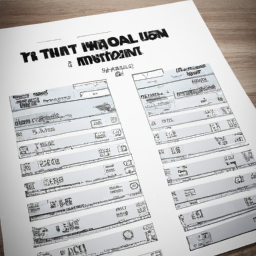The idea of investing for higher returns might sound appealing, but there are a few things to consider when it comes to high rate investments. Treasury bills (T-bills) and high-yield savings accounts are two of the most popular high rate investment options. But which is the best choice for you?
Treasury Bills offer a safe and secure investment option, as T-bills are backed by the US government. They also tend to offer higher interest rates than savings accounts. Currently, the rate on U.S. six-month Treasury bills surpassed 5%, reaching its highest level since 2007. This rate is enticing enough to warrant at least some investment dollars, especially if you are seeking a low-risk investment option. However, T-bills are not insured by the FDIC or any other government agency, so there is some risk involved.
High-yield savings accounts let you earn a higher interest rate on your money than a regular savings account. These accounts are FDIC insured, so your money is safe, but the interest rates are often lower than those offered by T-bills. There are several other established high-yield savings accounts at 3.40%+ APY that aren't the best option for those looking for higher returns.
